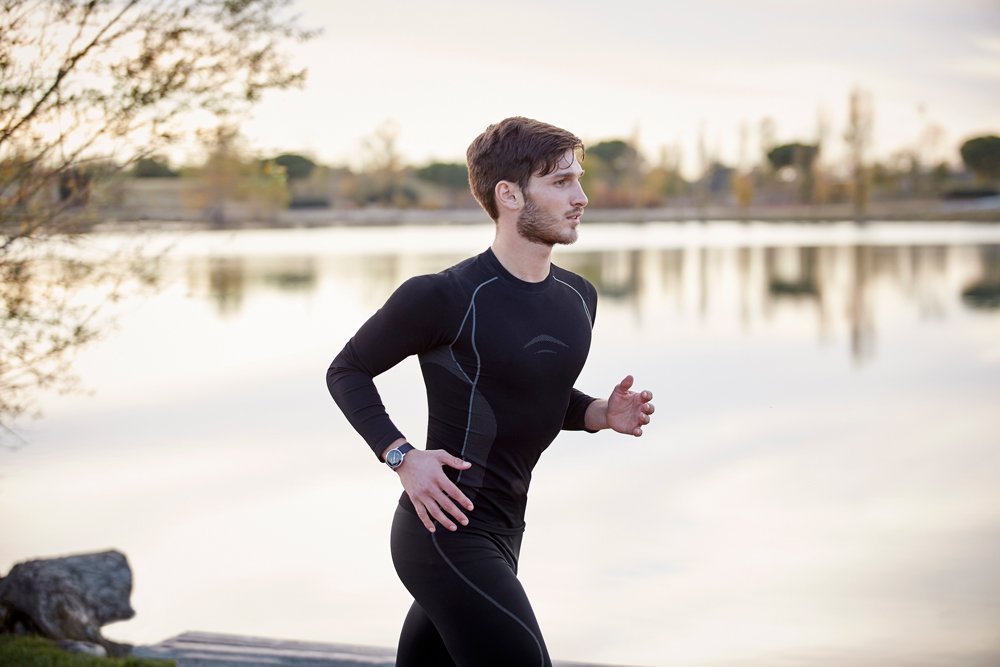
Better living without chemistry? Whether you walk, run or tap dance, getting your body in motion for half an hour most days of the week can lower your risk of several forms of cancer, type 2 diabetes, and heart disease. Read on to learn more about physicians who are trying to spread the word that ramping up activity levels has proven benefits that go far beyond a toned body.
At Withings, we know that small, daily choices add up to have a big impact on people’s health. Being more active is one of those choices, and increasingly, research is showing that exercise can be powerful medicine, preventing the onset of many chronic diseases, and even reversing or mitigating symptoms for people already diagnosed with an illness.Most people know that exercising regularly is important for improving and sustaining overall health. They know they’ll feel better, feel stronger, and likely have more energy. And yet, according to the Centers for Disease Control, only 1 in 5 American adults meet the suggested physical activity levels of 150 minutes of moderate-intensity activity through the week plus strength training the major muscle groups at least twice a week. Among American high school students, only 3 in 10 get the recommended 60 minutes of physical activity each day.
“People tend to not recognize just how important physical activity can be,” said Dr. Michael Pratt, a professor at Rollins School of Public Health at Emory University. Pratt also sits on the advisory board of Exercise is Medicine, a global health program run by the American College of Sports Medicine that is seeking to improve the low activity levels of people around the world by encouraging physicians to speak more strongly and clearly with patients about the specific benefits of exercise. The organization also aims to connect doctors and other health care workers with exercise professionals and fitness programs to improve treatment plans, accessibility, affordability, and follow-through.
“The biggest misconception is that, while people know exercise is important, they think it’s not as important as eating right or getting regular mammograms when, in fact, it is as important. It’s the relative importance of exercise that is misunderstood,” Dr. Pratt told Withings.
The benefits of exercise in preventing or improving the outcomes of many diseases and chronic illnesses are striking. According to Exercise is Medicine, regular physical activity reduces the risk of death and recurrence of breast cancer by about 50 percent and lowers the risk of developing colon cancer by 60 percent. Exercise reduces the risk of developing type 2 diabetes by 58 percent. Getting your heart pumping with a regular fitness routine has also been shown to decreases the symptoms of depression as well as Prozac or behavioral therapy. It also reduces the risk of heart disease and high blood pressure by about 40 percent and lowers the risk of stroke by 27 percent. Finally, staying fit helps you stay sharp, reducing the risk of developing Alzheimer’s disease by about 40 percent as you age and even improving SAT scores among teens.
“Exercise is, in a sense, a magic pill,” Dr. Pratt told us. “The problem is, you have to do it for 30 minutes a day.”
The crucial question is: how do you get people to take that powerful pill daily for the rest of their lives? Dr. Pratt said helping people truly understand the profound benefits of exercise listed above is a good place to start and needs to happen in the doctor’s office, the gym, neighborhood community centers, and with widespread public information efforts.
Once people understand how important exercise is, other factors must be tackled to make sure people maintain their fitness routines for the long haul. Pratt said relationships between physicians and local fitness professionals are crucial so patients can be connected with programs that are close to their homes and appropriate for their unique conditions. Community health programs and open space programs are also important so people have local places to go for exercise throughout the year and inviting, safe places to be active outdoors. For low-income communities, safe public parks and healthcare programs that offer affordable fitness classes and gym memberships are crucial.
Finally, Pratt said doctors and fitness professionals have to remember that one type of exercise doesn’t fit all. Some people will love walking, while others will be inspired by Zumba classes. For others, an inspiring adventure in chivalry or a gym for geeks might be the key. “Finding something we really like is important,” Dr. Pratt explained to Withings. “You have to find that sweet spot that keeps you going, whether it’s training for a 5K or ballroom dancing.”
Dr. Pratt said the trend is towards improved activity levels for people in America and across the globe, but there are miles to go yet. He told Withings, “A lot of progress has been made, but this is a marathon and we’re in the middle.”
***
Thanks to Dr. Pratt for the expertise.



